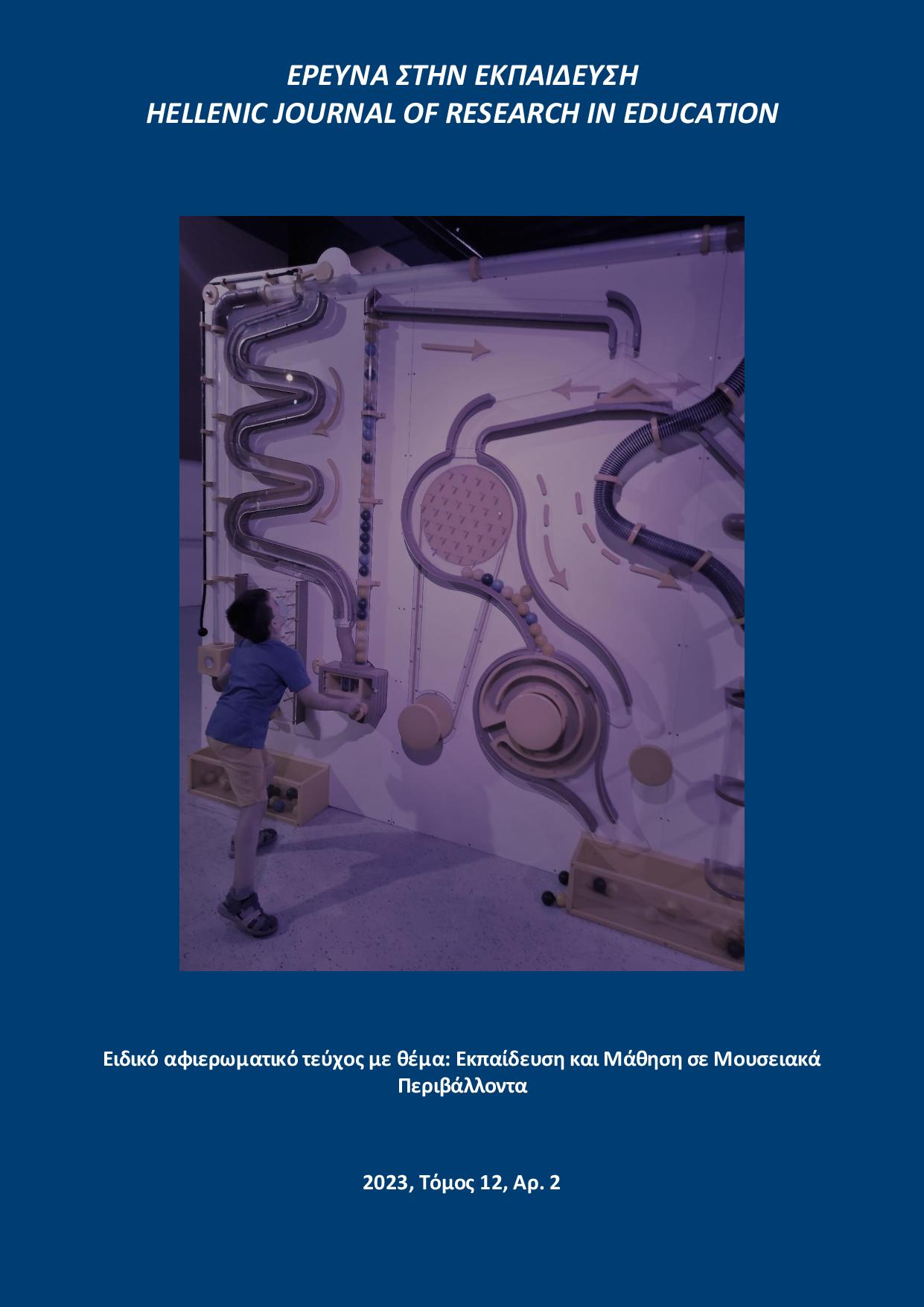Σχεδιάζοντας τη μάθηση στα μουσεία: Μια διαδικασία επαγγελματικής ανάπτυξης

Περίληψη
Το άρθρο εξετάζει τον ρόλο της εκπαιδευτικής έρευνας και της αναστοχαστικής πρακτικής στον σχεδιασμό μιας μεθοδολογίας μάθησης στο πλαίσιο της μουσειακής εκπαίδευσης. Η εκπαιδευτική έρευνα και η αναστοχαστική πρακτική εξετάζονται για τον ρόλο τους στην εμπειρία με επίκεντρο τον επισκέπτη και στην επαγγελματική ανάπτυξη των μουσειοπαιδαγωγών μέσα από την περίπτωση του Εθνικού Μουσείου Επιστημών και Τεχνολογίας Leonardo da Vinci. Η εργασία εξετάζει αρχικά τα ερευνητικά ερωτήματα μέσα από το έργο του Εκπαιδευτικού Τμήματος του Μουσείου προκειμένου να πλαισιώσει και να δικαιολογήσει ορισμένες επιλογές και κατευθύνσεις στην ανάπτυξη των εκπαιδευτικών προγραμμάτων. Στη συνέχεια, αναλύεται ένα από τα εκπαιδευτικά προγράμματα του Μουσείου, το "Future Inventors", ως πλαίσιο για τη συζήτηση της διαδικασίας σχετικά με τον σχεδιασμό της μεθοδολογίας και την αναστοχαστική πρακτική, προκειμένου να αμφισβητηθούν παραδοσιακές επιστημολογικές θέσεις που αφορούν στη μαθησιακή εμπειρία των επισκεπτών και να τονιστεί η σημασία της επαγγελματικής ανάπτυξης των μουσειοπαιδαγωγών για τον εμπλουτισμό των γνώσεών τους στον τομέα και των ικανοτήτων που είναι απαραίτητες για να σταθούν ως ‘συνήγοροι’ των επισκεπτών εντός του μουσειακού ιδρύματος.
Λεπτομέρειες άρθρου
- Πώς να δημιουργήσετε Αναφορές
-
Xanthoudaki, M. (2023). Σχεδιάζοντας τη μάθηση στα μουσεία: Μια διαδικασία επαγγελματικής ανάπτυξης. Έρευνα στην Εκπαίδευση, 12(2), 145–154. https://doi.org/10.12681/hjre.34919
- Ενότητα
- Άρθρα

Αυτή η εργασία είναι αδειοδοτημένη υπό το CC Αναφορά Δημιουργού – Μη Εμπορική Χρήση – Παρόμοια Διανομή 4.0.
Τα πνευματικά δικαιώματα των άρθρων του περιοδικού ανήκουν στους συγγραφείς. Τα άρθρα διατίθενται με άδειες Creative Commons CC-BC-SA 4.0


